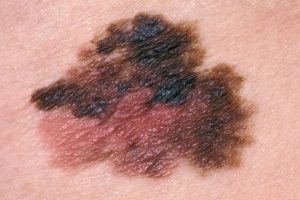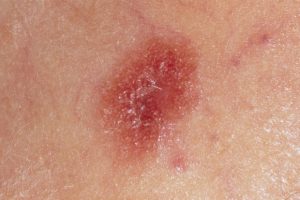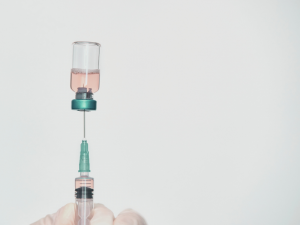We had a rare sunshiny tropical public holiday weekend here in London, in fact, it was the hottest May Day Bank Holiday ever! With the resulting flurry of people donning their summer or holiday clothes. In an attempt to soak up the rays, or cool off many people flocked to beaches and parks or lounged in their back gardens. While this is a good thing as it makes essential vitamin D, all sun exposure has risks.
I saw lots of people with bare skin; it was clear that some were better protected than others. One of the groups at risk were people busy working in their garden and not thinking about the sun and their skin at all, while they took the opportunity to pop in a few shrubs, get busy with the secateurs or plant some beans.
As a trained first responder I am always on “duty” and was asked to help someone with a “gardening” injury over the weekend and noticed an unusual looking mole while examing them, which hadn’t been inspected since the last time they “stripped off” which was more than a year ago. Realising that there is much confusion about how to be skin safe when it comes to moles, this blog is not intended to cause alarm but to raise awareness about skin health.


What exactly is a mole?
Moles are normal everyone regardless of their skin colour has them, some people have more than others because of a genetic predisposition or due to environmental factors including sun exposure. A mole is a collection of pigment cells in the skin called melanocytes; they give skin its natural colour. Moles are also known as a Melanocytic Naevus, they can vary in size and shade, can be a dark flat spot, or raised or fleshy. In most people, they are generally medium to dark brown but can also be skin-coloured or black. Most moles are harmless.
Why the fuss?
Most people know that getting sunburnt just once increases the chances of getting skin cancer. Melanoma is a type of skin cancer which can be more serious than the other forms because it may spread to other parts of the body including organs. According to Cancer Research UK, Melanoma is the 5th most common cancer in the UK and on the rise.
Are you at risk?
- The risk rises if people have lots of moles, more than 11 moles on the arm is an indication that you’re likely to have more than 100 moles on your whole body.
- People with fair hair and eyes, lots of freckles or pale skin that burns easily are also at increased risk
- Also those with large moles
- People who use a sunbed are also at increased risk
- Melanoma is slightly more prevalent in females than males, it commonly affects the legs in women and the back in men but can occur anywhere in the body, although uncommon in areas of the body which are protected from sun exposure.
The ABC (& DE) of checking moles
If you have moles, you probably know you should be checking them, but many people are confused about to look for, there is a simple guide that will increase your checking confidence!
Look for new moles, or changes in the size, colour or shape of an existing mole.
A – Asymmetry. Do both halves of the mole look the same?
B – Border. Is the edge of the mole uneven or blurred?
C – Colour. Is the mole a mix of different shades or colours?
D – Diameter. Is it bigger than 6mm from side to side? (the end of a pencil is about 5mm across)
E – Evolution. Has the mole changed?
There are a few other important things to look out for: itching and bleeding or crusting. If a mole starts to bleed and you haven’t injured it, then you should get it checked as soon as you can.


How often?
Please remember that most moles are harmless but its a good idea to check yourself regularly, once a month would be great, but the reality is most people only manage to do this once a quarter. The better you get to know your whole skin, the more likely you are to notice any changes.
How to check your skin
It can be tricky to do this yourself at home, using a full-length mirror and a hand mirror will help to check hard to see places such as your back, buttocks, back of the neck and scalp. Don’t forget the less obvious places too, in between fingers, and toes, the soles of your feet, underarms and fingernails. If you have a partner, they can check them for you and take photos to compare at a later a date.


Image ref:https://www.cancer.org.au
Need some help
If you come in for treatment and would like me to check your moles, please do ask, I will generally take a photo (with your phone) which is a useful and easy way to monitor changes, as the photo is automatically dated and easy to enlarge, it’s also a helpful tool for your GP. You can also do this yourself at home if you have someone available to help. If there is anything that needs investigation I will refer you on, early action is crucial to preventing moles leading to a more serious problem.
Worried about a mole or your skin in general
Get it checked by a doctor, many GP surgeries now have skin specialists (dermatologists) as part of their team, if not they will if needed refer you to a specialist at your local hospital. Most moles are harmless, but early diagnosis of skin cancer is essential, the prognosis in most cases is very good with prompt detection and early referral for appropriate treatment.
Footnote:
Whether you have a few or hundred moles, it’s essential to think sun safety. Although we need around 15 – 30 minutes of daily sun exposure on bare skin during April – October to make enough Vitamin D. We should be after this time using a high protection sunscreen, or wearing a long-sleeves top, full-length trousers, and wearing sunglasses, while in the midday sun.
This blog is not intended to cause alarm or frighten but to encourage you to check your skin regularly. Set a reminder on your phone or use one of the free mole checker Apps.
Disclaimer:
Please note: This blog is for guidance only, it should not be regarded as a substitute for medical advice, diagnosis or treatment given in person by an appropriately trained health professional.
SaveSave
SaveSave
SaveSave
SaveSave
SaveSave
SaveSave
SaveSave
SaveSave
SaveSave
SaveSave
SaveSave
SaveSave
SaveSave
SaveSave
SaveSave
SaveSave
SaveSave
SaveSave







